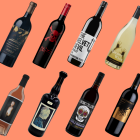The English wine industry is booming. While in itself nothing new, the last few years has seen it welcome more vineyards, more wineries and more trade records, setting impressive new levels for production, sales and exports. Analysts predict substantial growth over the coming decade, and given the continued acclaim English wine is enjoying from all corners of the globe, it’s not hard to see why. Here are the top 10 producers you need to have on your radar.
1. Nyetimber
Since the first vines were planted in 2006, the sparkling wines of this Sussex-based producer have gone on to earn their place on the world stage. The estate produces a range of wines, including a classic cuvee, rose, blanc de blancs and its 1086 Prestige Cuvee, which has recently gone on sale in Hong Kong. Its Prestige Cuvee Rose, meanwhile, is the most expensive English fizz on the market.
2. Furleigh Estate
Furleigh Estate, set in the stunning Dorset countryside, lies just five miles from the Jurassic Coast World Heritage Site. This picturesque property produces a range of both still and sparkling wines, including its award-winning Oenotheque 09 and 10 vintages.
3. Lyme Bay Winery
This busy Devonshire estate produces a wide range of drinks, including mead, cider, spirits and fruit wine – but its English wines are truly something special. Each is inspired by the winery’s love of all things coastal and West Country, and has been designed to pair perfectly with local, seasonal fare.
4. Three Choirs Vineyard
One of England’s oldest vineyards, Three Choirs in Gloucestershire has been producing wine since 1973. Among its range of still whites and sparkling offerings is a fantastic red, Ravens Hill – a fine blend of Regent, Rondo and Triomphe grapes producing a deep, ruby coloured wine full of ripe blackberry and cherry fruit.
5. Blackdown Ridge
Sitting 440 feet above sea level in the Sussex Weald, Blackdown Ridge enjoys extraordinary views over the South Downs National Park. Its vines were first planted in 2010, with the first sparkling wine released in 2015. The estate now produces a range of award-winning wines, including a highly acclaimed Triomphe red and, more recently, a Sauvignon Blanc.
6. Gusbourne Estate
The original Gusbourne Estate in Appledore, Kent dates all the way back to 1410. Discerning English wine fans, however, having been enjoying the estate’s offerings in their most recent incarnation since 2004, when the current team took over the property. Its award-winning range includes a blanc de blancs, blanc de noirs, rose and Brut Reserve.
7. Chapel Down
Another highly-revered English producer, Kent’s Chapel Down estate has been on a mission to change people’s attitude towards English wines for the last 15 years. Located within the High Weald Area of Outstanding Natural Beauty, the estate produces a vast range of both still and sparkling wines, as well as a fine selection of spirits and ales.
8. Hush Heath Estate
This Kentish estate is nestled around the magnificent Tudor-framed Hush Heath manor, which dates back to 1503 – although its winery and adjoining tasting rooms are housed in much more contemporary stylings (pictured above), with wonderful views across the estate’s many nature trails and woodlands. Its collection of wines include blanc de blancs, still whites, reds and sparkling rose.
9. Bride Valley
Bride Valley’s story began in 2008, when Steve Spurrier and his wife travelled to Burgundy’s famous Pepinieres Guillaume vine nursery, where they selected the finest Chardonnay, Pinot Noir and Pinot Meunier root stocks for the Dorset property. In 2011 the first harvest was picked – it sold out on release in 2014. Its small but perfectly formed range now comprises a Cremant, a rose and a blanc de blancs.
10. Halfpenny Green
Established in 1983, Halfpenny Green produces world-class wines from its base in the south Staffordshire countryside. Its superb collection of award-winners comprises an impressive range of still and sparkling wines, with unique standouts including a sparkling red and a highly sought-after sweet dessert wine aptly named ‘Late Harvest’.






